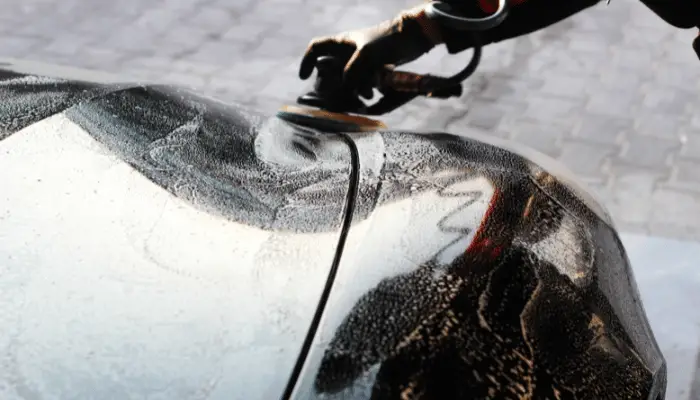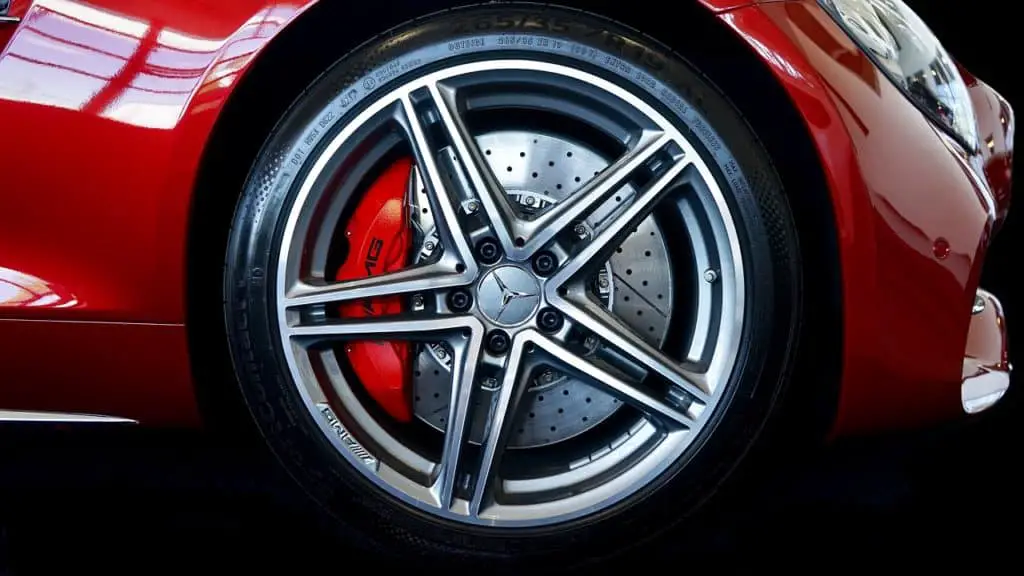- How to Clean Car Carpets Quickly (Without An Extractor) - July 10, 2024
- Can You Touch Up Clear Coat On A Car? Yes and No (Here’s Why) - November 25, 2023
- How To Wax A Car By Hand (For Beginners) - November 14, 2023
Last Updated on January 19, 2025 by Nate Schnell
Cleaning polishing pads might not be the most exciting task, but it’s essential for achieving top-notch results in car detailing. Properly maintaining your pads ensures they perform at their best, prolongs their lifespan, and prevents damage to your vehicle’s paintwork. This guide explains why cleaning pads is crucial, how to do it effectively, and when it’s time to replace them.
The Importance of Cleaning Polishing Pads
Polishing pads accumulate residue, dirt, and paint particles as you use them. This buildup can:
- Reduce the pad’s cutting ability, making polishing less effective.
- Cause swirl marks or scratches on your car’s paint.
- Lead to cross-contamination between different polishing stages.
- Shorten the lifespan of the pads.
By cleaning your pads regularly, you can maintain their performance and achieve consistent results during every detailing session.
Can Foam and Wool Pads Be Washed?
Both foam and wool pads can be cleaned to remove dirt and residue. Washing restores their texture and effectiveness. While foam pads are relatively straightforward to clean, wool pads may shrink if cleaned improperly, so it’s essential to use the right methods.
How Often Should You Clean Polishing Pads?
Frequent cleaning is key. Clean pads after each section of your vehicle or at the end of every detailing session. Regular maintenance prevents residue buildup, ensures better performance, and extends the life of the pads. If a pad becomes overly saturated or contaminated, clean it immediately to avoid damaging your car’s paint.
Recognizing When to Replace Polishing Pads
No matter how well you maintain your pads, they’ll eventually need replacing. Look for these signs:
- The pad loses its shape or flattens out.
- The Velcro backing peels off or stops adhering properly.
- Foam becomes overly soft, hardened, or deteriorated.
- Visible tears, shredding, or heavy staining appear.
Continuing to use worn-out pads can compromise your results and risk damaging your vehicle’s surface.
Cleaning Polishing Pads During Use
Brushing the Pad
After completing a section, turn the polisher over and lightly brush the pad’s surface with a small plastic bristle brush while the machine is running. This helps remove loose residue and prevents it from drying. Use brushes with bristles that are firm enough to clean effectively but not so stiff that they damage the pad.
Using Compressed Air
Compressed air is a preferred method for cleaning during use. Hold the pad away from the car and blow compressed air across its surface to clear out residue. If needed, perform this step in a contained area to avoid spreading debris.
Cleaning with a Towel
Spray the pad with a diluted all-purpose cleaner (APC) or quick detailer and let it sit for a few seconds. Then press a clean microfiber towel against the pad while turning on the polisher. The towel absorbs residue and helps clean the surface effectively without causing damage.
Cleaning Polishing Pads After Use
Using a Pad Washer
Pad washers are highly effective for deep cleaning. Fill the washer with water and a cleaning solution, attach the dirty pad to your polisher, and submerge it in the washer. Turn on the polisher for a few seconds to let the washer’s bristles and solution clean the pad. Rinse thoroughly afterward.
Spray and Squeeze Method
If you don’t have a pad washer, spray the pad with a cleaning solution and massage it gently to loosen residue. Rinse under running water, squeezing the pad to remove dirt and excess water. Let the pad air-dry completely before storing or reusing.
Washing Machine Option
Place pads in a mesh laundry bag to protect them during the wash cycle. Use a gentle cycle with mild detergent and cool water, ensuring the temperature does not exceed 104°F (40°C). Allow pads to air-dry thoroughly before use.
How Long Do Polishing Pads Last?
Well-maintained pads can last for 10 to 20 uses, depending on their quality, cleaning methods, and how they’re used. Pads showing signs of deformation, discoloration, or permanent staining should be replaced to avoid compromising your detailing results.
Factors That Wear Out Polishing Pads
Several factors can shorten the lifespan of polishing pads, including excessive heat during use, overloading with product, aggressive cleaning methods, and frequent contact with sharp or rough surfaces. Using high-quality pads and proper techniques can help minimize wear and extend their usability.
Conclusion
Cleaning and maintaining your polishing pads is vital for ensuring top-notch detailing results. Whether you’re using a brush, compressed air, or a pad washer, regular cleaning keeps your pads in excellent condition and prevents issues like swirl marks or uneven finishes. Replace worn-out pads promptly to protect your car’s paint and achieve flawless results every time. With proper care, your polishing pads will serve you well for many detailing sessions to come.



